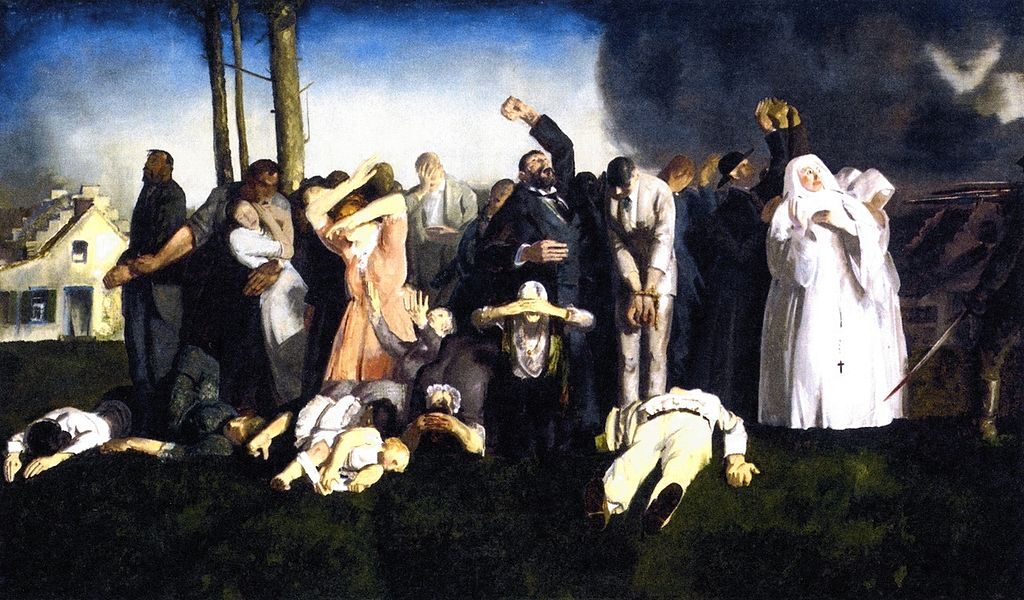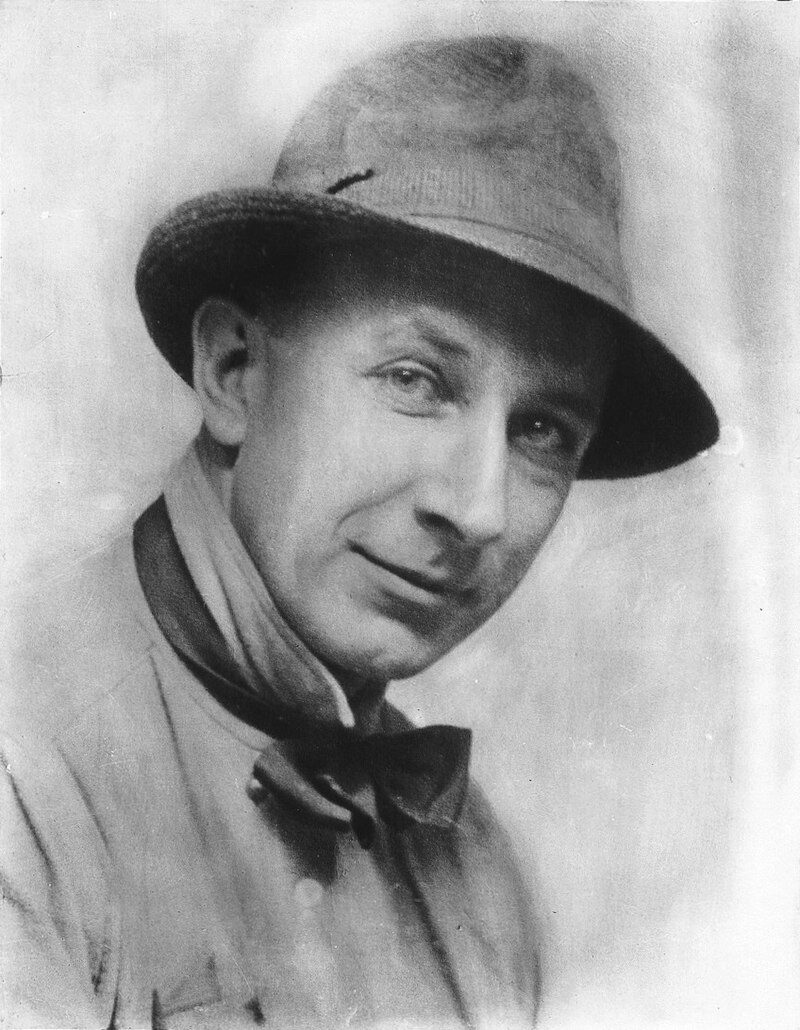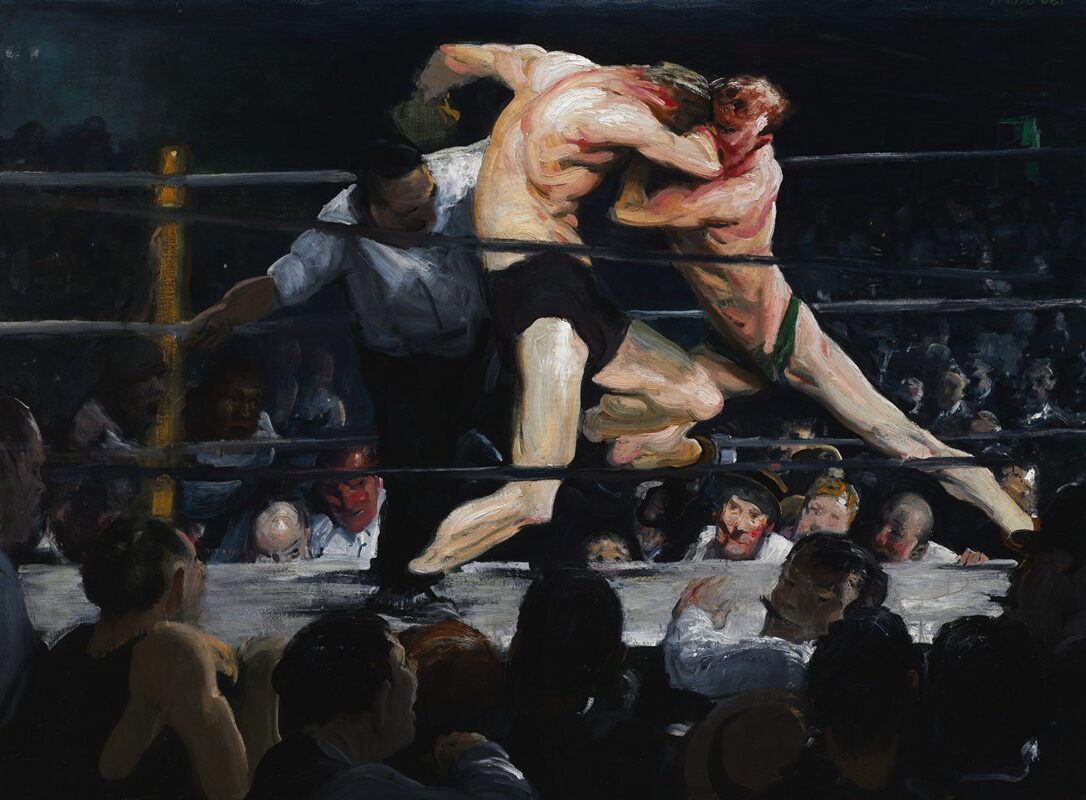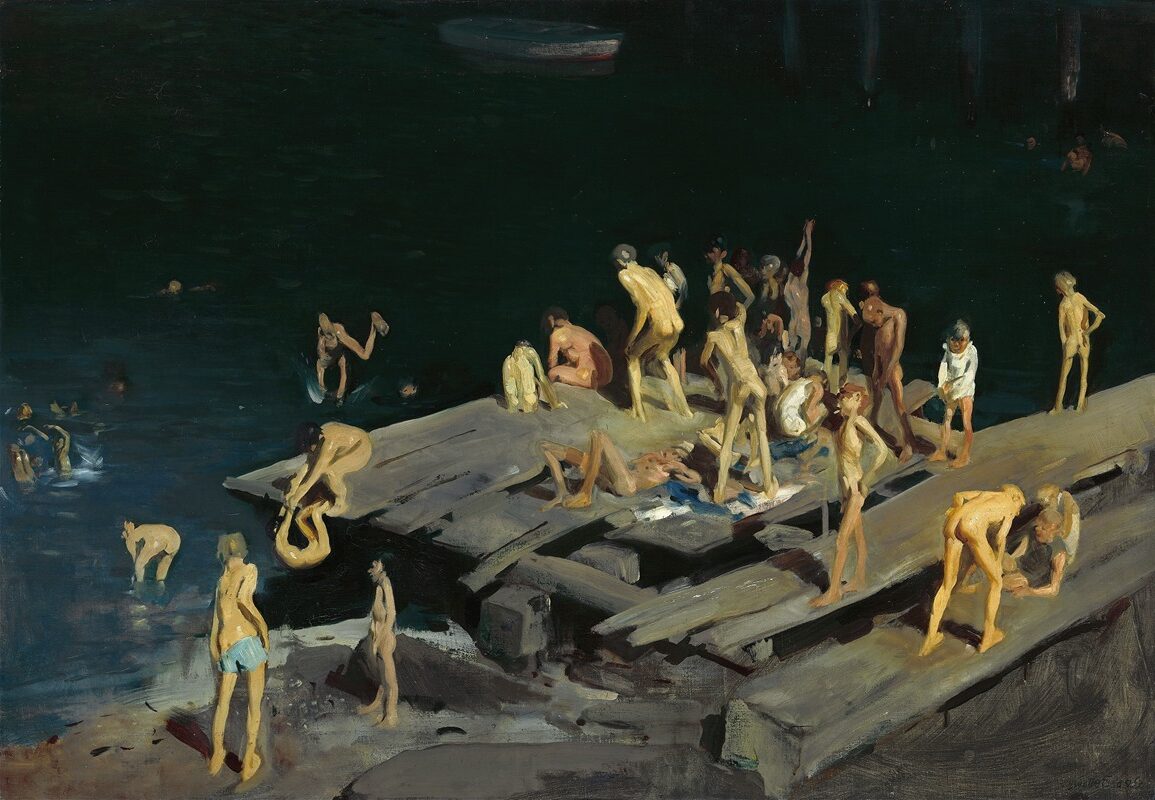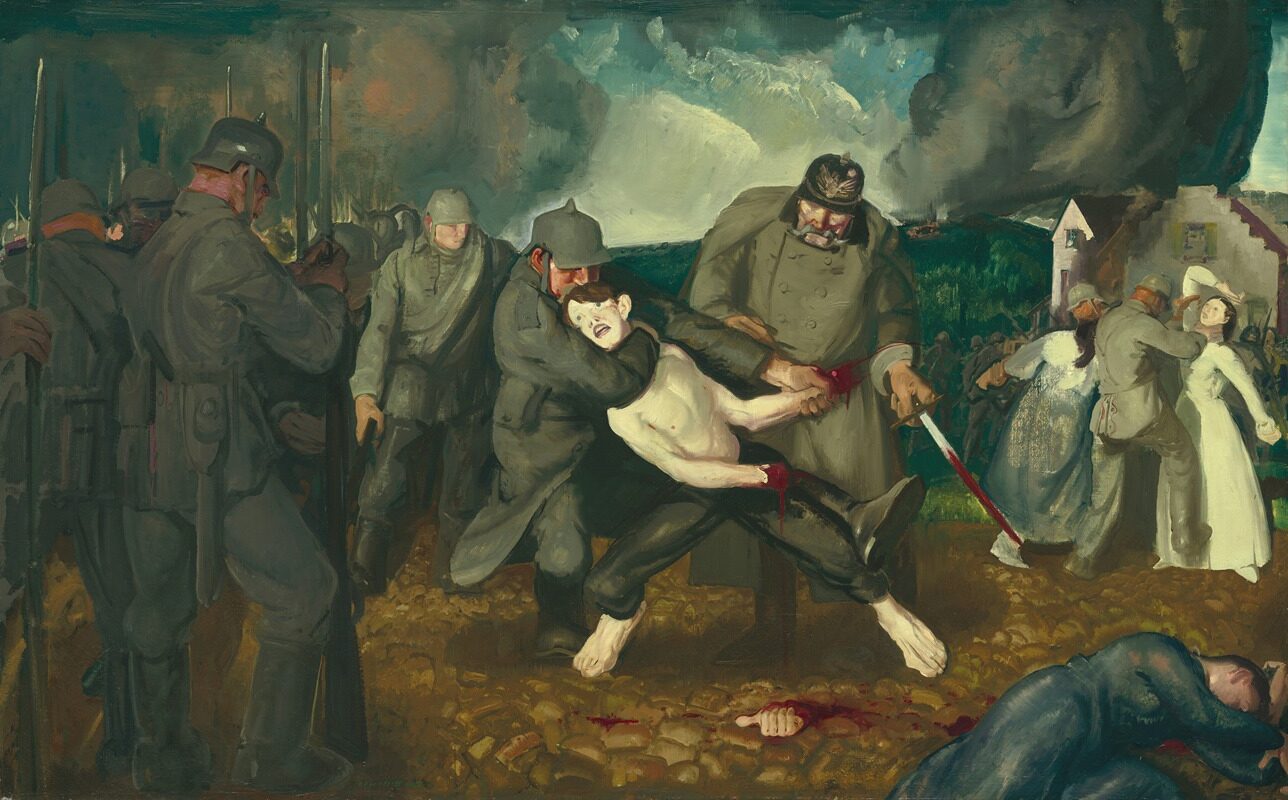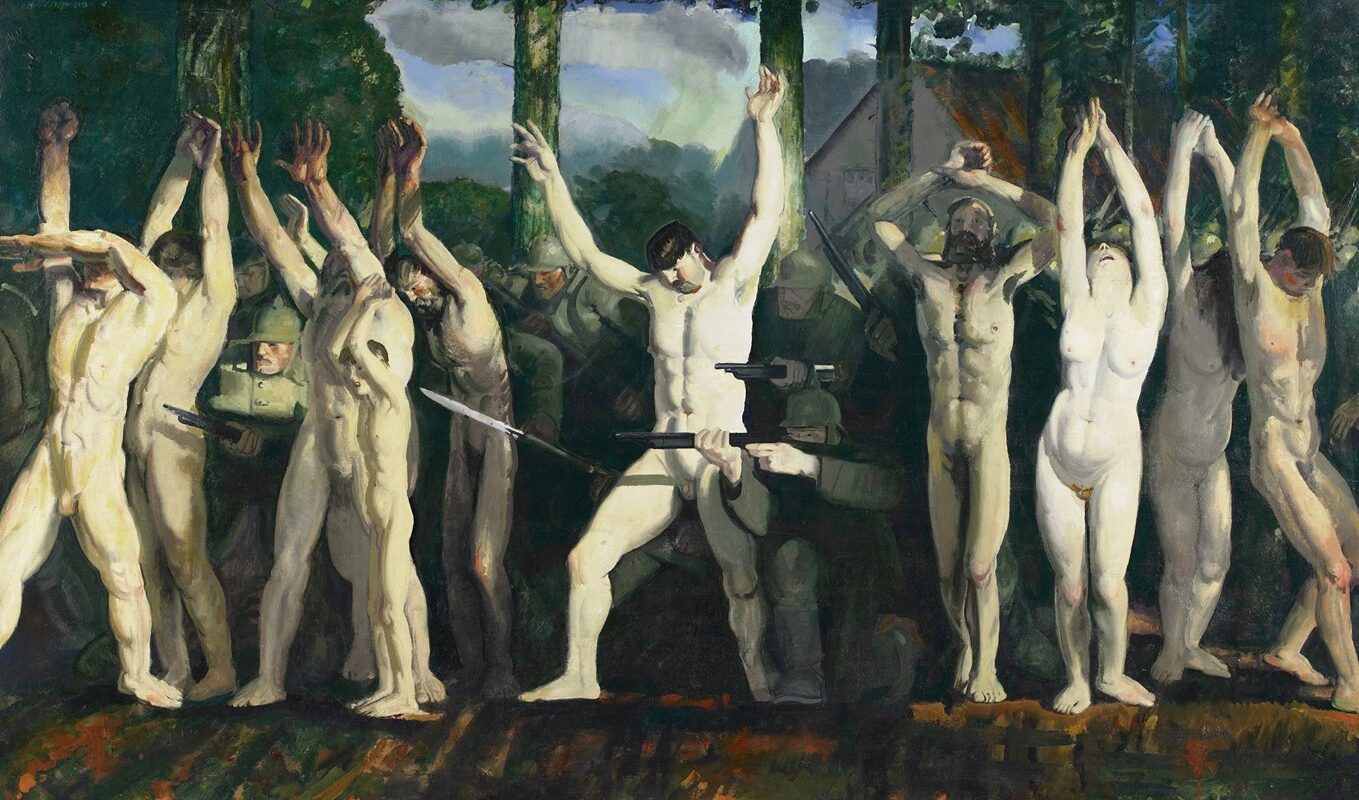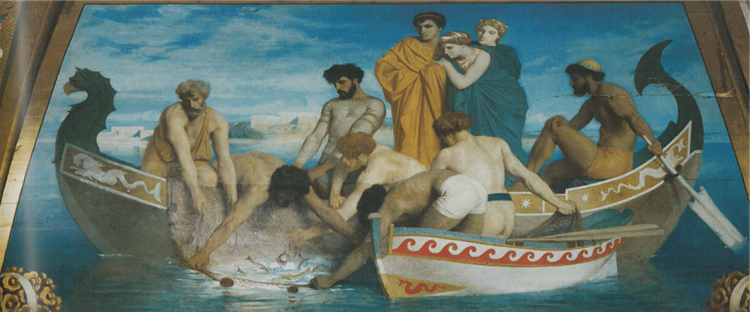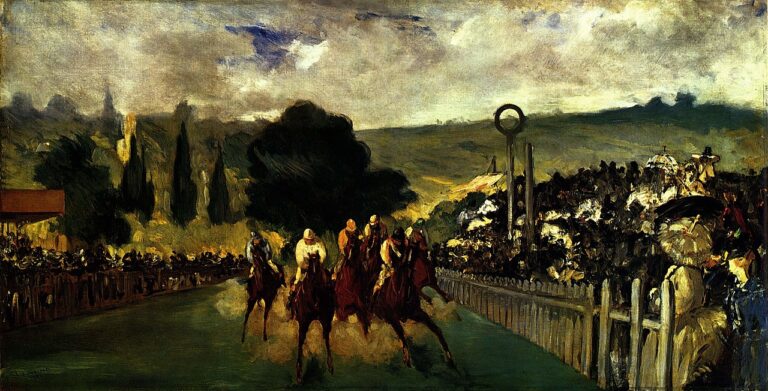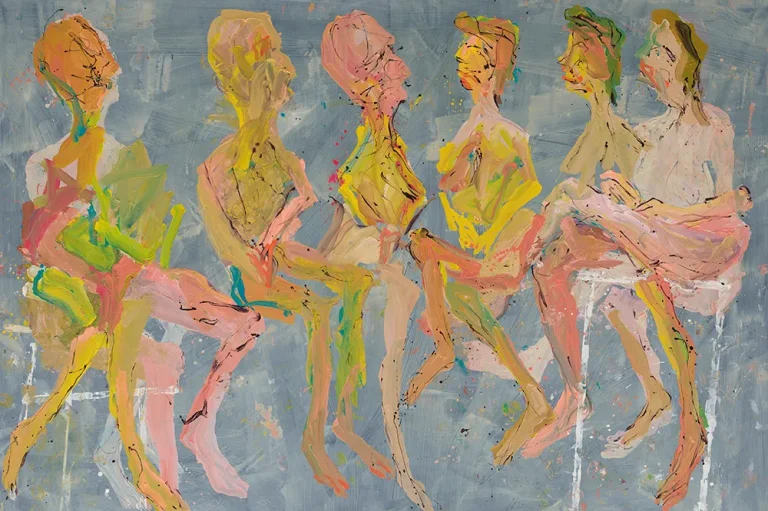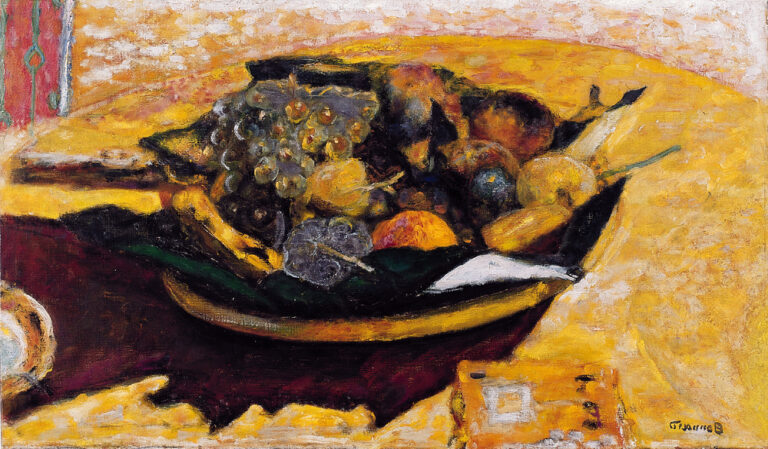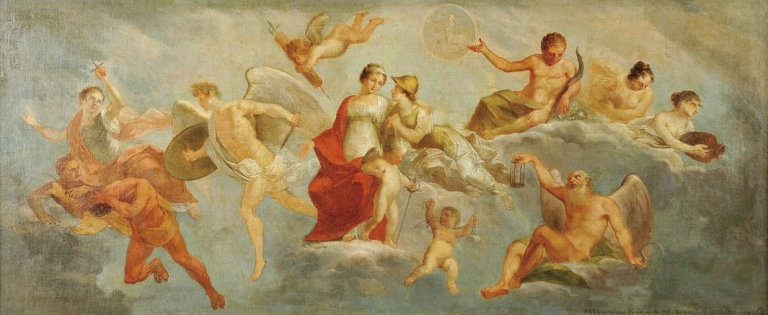George Bellows Painter: American Realism Pioneer of Early 20th Century Art
Born: August 12, or August 19, 1882, Columbus, Ohio, U.S.
Death: January 8, 1925, New York City, New York, U.S.
Art Movement: Ashcan School, The Eight, American realism
Nationalité : Américain
Teacher: Robert Henri
Institution: New York School of Art
George Bellows Painter: American Realism Pioneer of Early 20th Century Art
Life and Influences of George Bellows
George Bellows emerged as a significant American realist painter. His artistic journey was shaped by his Midwestern roots, influential mentors, and the vibrant energy of early 20th century New York City.
Early Life and Education in Columbus, Ohio
George Wesley Bellows was born in Columbus, Ohio in 1882. As a young man, he displayed considerable artistic talent alongside athletic abilities, particularly in baseball and basketball.
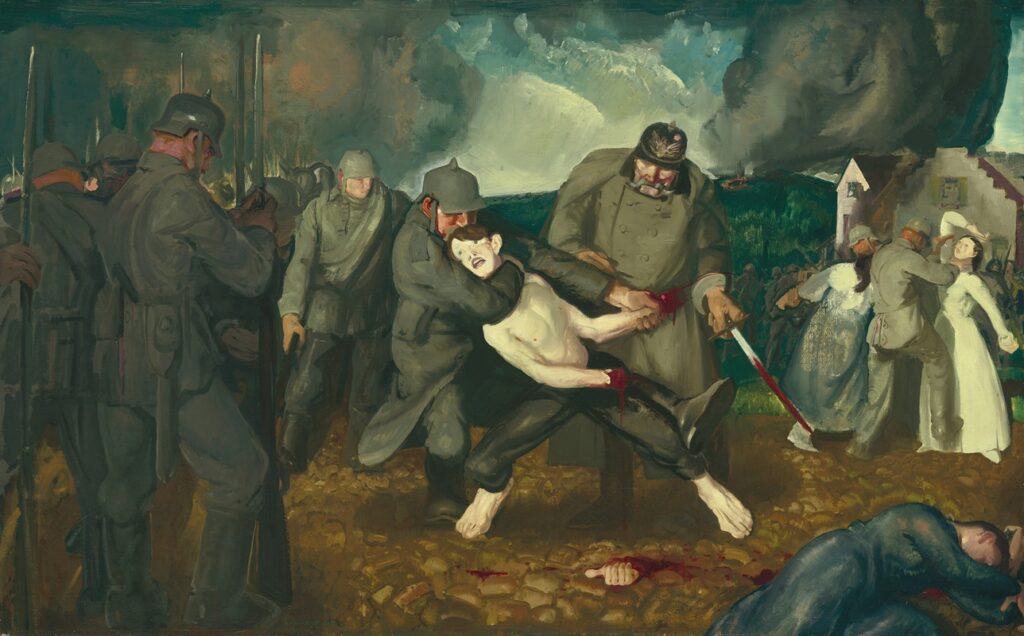
The Germans Arrive, 1918, by George Bellows
Bellows attended Ohio State University where he played baseball and created illustrations for the school yearbook. Despite his athletic success, his passion for art eventually took precedence.
His Midwestern upbringing influenced his straightforward approach to subject matter and his interest in everyday scenes. Though he would later leave Columbus, the practical values and clear-eyed perspective he developed there remained evident in his work.
The Ashcan School and Robert Henri’s Impact
In 1904, Bellows moved to New York City to study art, where he became associated with the Ashcan School movement. This group rejected academic traditions in favor of depicting the gritty reality of urban life.
Robert Henri became Bellows’ most significant teacher and mentor at the New York School of Art. Henri encouraged Bellows to paint life as he saw it without sentimentality or idealization.
Under Henri’s guidance, Bellows developed a bold painting style characterized by vigorous brushwork and a focus on authentic urban subjects. This approach challenged the prevailing artistic conventions of the time.
The Ashcan School’s emphasis on realism and everyday life subjects deeply shaped Bellows’ artistic vision and subject choices.
Bellows’ Development as an American Painter
Bellows quickly established himself in New York’s art scene with his dynamic paintings of boxing matches, city scenes, and portraits. His work gained attention for its raw energy and unflinching honesty.
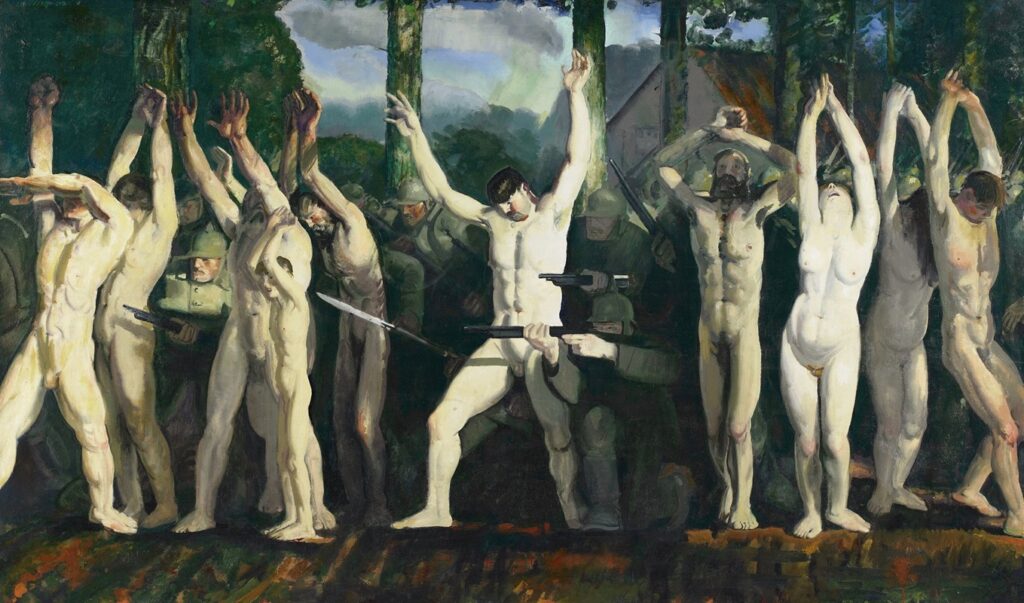
The Barricade, 1918, by George Bellows
He expanded his technique and subject matter throughout his career, exploring different color theories and painting approaches. Bellows mastered various color systems, including those developed by Hardesty Maratta.
Though best known for his urban scenes, Bellows also created powerful seascapes, landscapes, and war images. His versatility showed his growing artistic confidence and technical skill.
Bellows’ career was tragically cut short when he died in 1925 at age 42 from a ruptured appendix. Despite his brief life, he left a lasting impact on American art through his bold realist style and dedication to depicting authentic American experiences.
Signature Works and Artistic Themes
George Bellows created powerful artworks that captured the raw energy of American life in the early 20th century. His most influential pieces focused on urban environments, boxing matches, and later expanded to include diverse subject matter that showcased his evolving artistic style.
Depictions of New York City and Urban Life
Bellows masterfully portrayed the gritty reality of New York City with unflinching honesty. His 1907 painting “Forty-Two Kids” shows boys swimming at a dock on the East River, capturing both the playfulness of youth and the harsh urban environment.
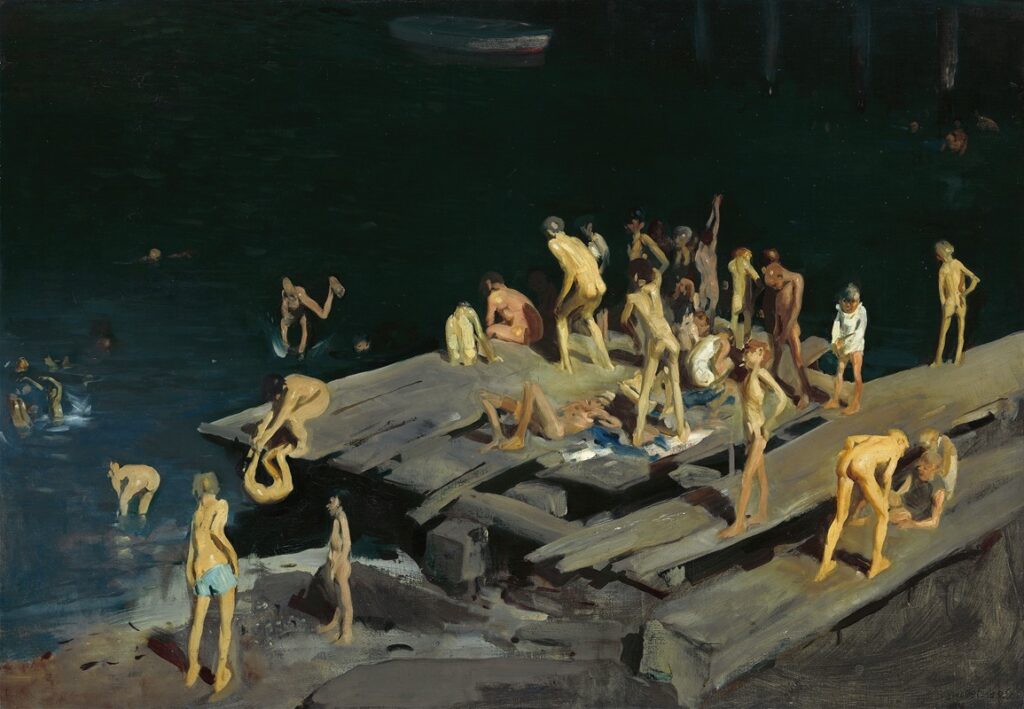
Forty-two Kids, 1907, by George Bellows
The artist’s urban landscapes often featured the stark contrasts of city life. “Riverside Park” (1909) depicts the intersection of natural space and urban development, highlighting class divisions in early 20th century Manhattan.
Bellows’ cityscapes weren’t merely observations but social commentaries. He painted construction sites, tenements, and snow-covered streets with equal attention, documenting the rapidly changing face of New York with both technical skill and emotional resonance.
Notable Boxing Paintings: ‘Stag at Sharkey’s’ and ‘Both Members of This Club’
Bellows’ boxing paintings remain his most recognized work. “Stag at Sharkey’s” (1909) portrays an illegal boxing match with brutal physicality. The fighters’ bodies twist in violent motion while spectators crowd around the ring, creating a scene of primal energy.
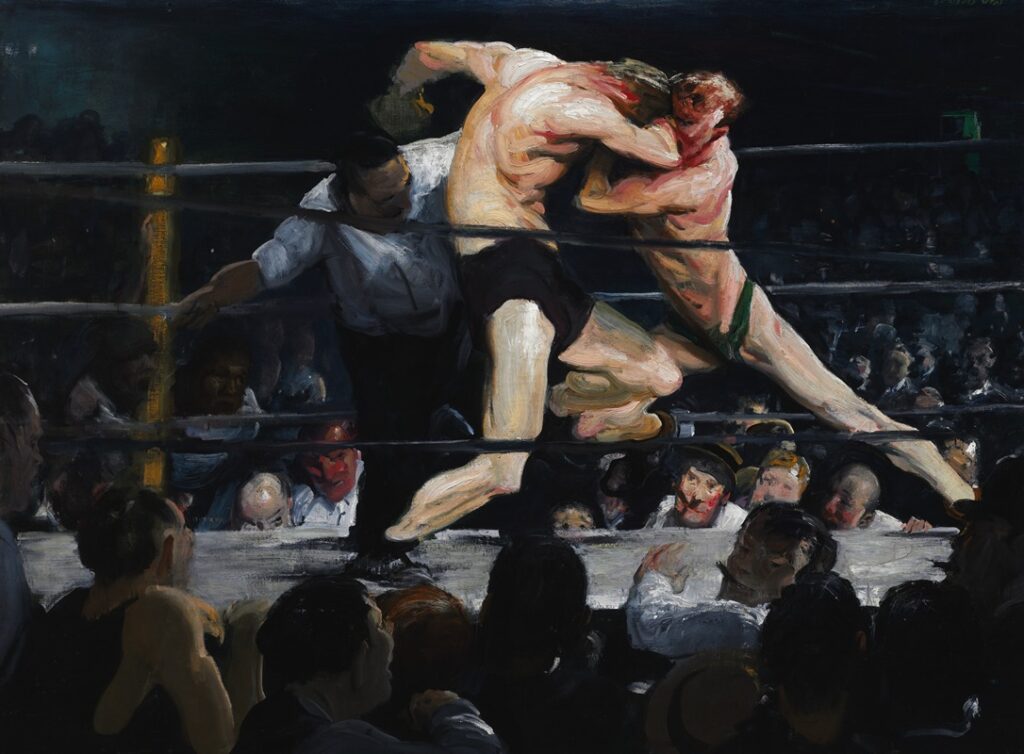
Stag at Sharkey’s, 1909, by George Bellows
“Both Members of This Club” (1909) similarly depicts the raw brutality of boxing. The painting’s title references the legal loophole that allowed fights to occur if participants were club “members.” The work showcases Bellows’ mastery of movement and human anatomy.
His later “Dempsey and Firpo” (1924) captures the famous 1923 heavyweight championship. The painting freezes a dramatic moment when Luis Firpo knocked Jack Dempsey through the ropes, demonstrating Bellows’ ability to distill explosive action into a single frame.
Expanding the Genre: Portraits, Landscapes, and Beyond
Beyond urban scenes and boxing matches, Bellows created sensitive portraits that revealed his subjects’ inner lives. His approach to portraiture emphasized psychological depth rather than mere physical likeness.
During summers in Maine, Bellows painted dramatic seascapes that showcase his versatility. These works feature crashing waves and rocky shores rendered with the same energy he brought to his city scenes.
As his career progressed, Bellows experimented with different color theories and compositional approaches. His later works show the influence of artists like Maratta and Ross, demonstrating his continuous artistic evolution while maintaining his commitment to realism and exploring our shared humanity.
Collections et héritage
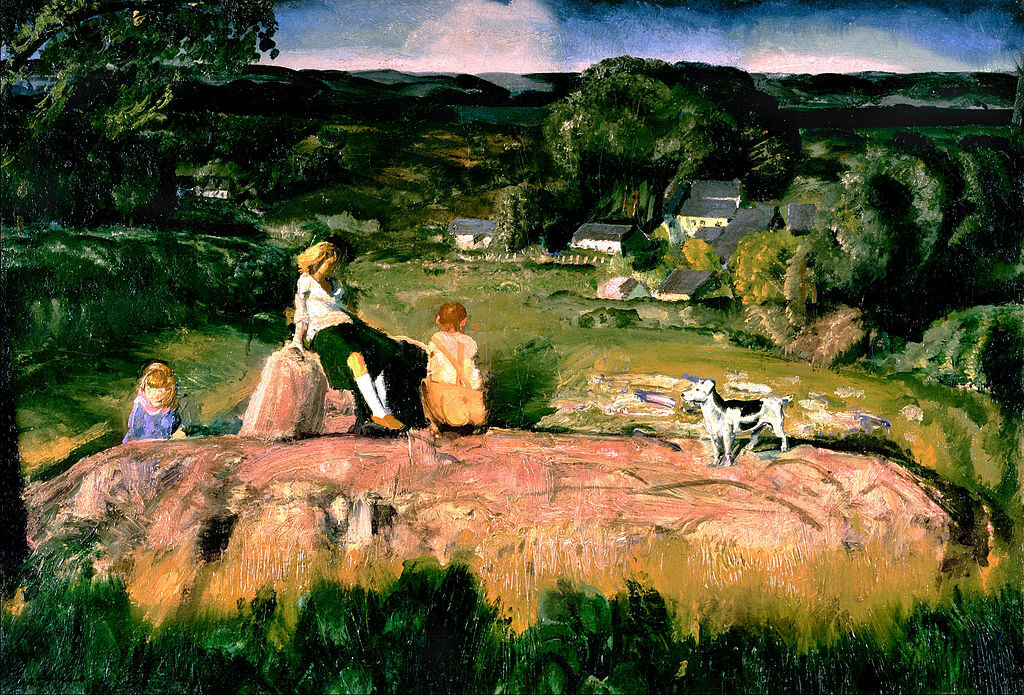
Three Children, 1919, by George Bellows
George Bellows’ artwork maintains a significant presence in major museums across America, ensuring his lasting influence on American art. His powerful imagery of urban life and social realism continues to resonate with viewers and inspire generations of artists.
Institutional Holdings and Public Access
The National Gallery of Art in Washington, DC houses one of the most comprehensive collections of Bellows’ work. The Metropolitan Museum of Art in New York also maintains significant holdings, showcasing his evolution as an artist. The Whitney Museum of American Art features several of his iconic boxing scenes and urban landscapes.
The Columbus Museum of Art, located in Bellows’ hometown, preserves his legacy through a dedicated collection. The Cleveland Museum of Art and Pennsylvania Academy of the Fine Arts also maintain important works by the artist.
Many of these institutions offer rotating exhibitions and digital archives, making Bellows’ work accessible to the public. His paintings frequently appear in traveling exhibitions about American Realism and early 20th-century art.
Impact on American and Twentieth-Century Art
Bellows’ participation in the groundbreaking 1913 Armory Show positioned him at the forefront of modern American art. His bold brushwork and unflinching social commentary influenced contemporaries and later artists like Edward Hopper.
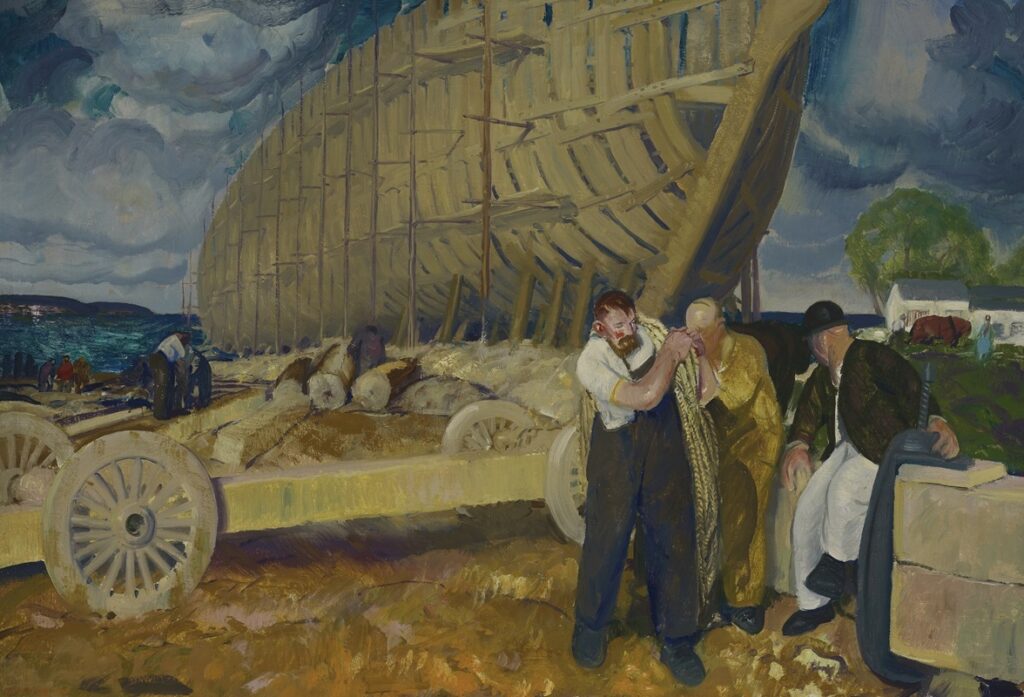
Builders of Ships, 1916, by George Bellows
His lithography work, often published in the progressive magazine The Masses, demonstrated how art could address social issues. This approach helped establish social realism as a significant movement in American art.
Bellows’ boxing scenes revolutionized sports imagery in fine art, capturing the raw energy and physicality of urban working-class life. His technical innovations in depicting motion and emotional intensity established new possibilities for representational painting.
Despite his early death at age 42, Bellows produced a body of work that continues to be studied for its artistic merit and social insights. His paintings serve as powerful documents of American life during a period of rapid urbanization and social change.
Questions fréquemment posées
George Bellows left a lasting impression on American art through his vivid portrayals of urban scenes, boxing matches, and landscapes. His artistic choices, influences, and evolution shaped his unique contribution to American Realism.
What artistic movement is George Bellows associated with?
George Bellows is most closely associated with the Ashcan School, an artistic movement that emerged in the early 20th century. This movement focused on realistic portrayals of daily life in New York City.
Bellows and other Ashcan artists rejected academic traditions and idealized subjects. Instead, they depicted the gritty reality of urban environments with unflinching honesty.
As a student of Robert Henri, Bellows embraced the philosophy that art should capture authentic experiences rather than staged beauty. This approach positioned him as a key figure in American Realism.
How did George Bellows contribute to the depiction of urban life in his artwork?
Bellows revolutionized urban representation through his bold and energetic paintings of New York City scenes. He captured the raw vitality of the metropolis during a period of rapid growth and social change.
His work documented various aspects of city life, from construction sites to crowded tenements. Bellows had a particular talent for portraying the contrast between social classes in urban settings.
His brushwork conveyed movement and energy, bringing scenes of street children, immigrants, and laborers to life. This dynamic approach helped viewers feel the pulse of early 20th century New York.
What are some notable works by George Bellows, aside from ‘Stag at Sharkey’s’?
“Cliff Dwellers” (1913) stands as one of Bellows’ most recognized urban scenes, depicting crowded tenement life on New York’s Lower East Side. The painting captures the density and energy of immigrant neighborhoods.
“Dempsey and Firpo” (1924) showcases another famous boxing moment, with dramatic composition and lighting. Bellows also created powerful seascapes like “The Big Dory” (1913), demonstrating his versatility beyond urban subjects.
His series depicting German atrocities during World War I, including “The Germans Arrive,” revealed his political engagement. His portraits, such as “Emma in a Purple Dress” (1920-23), display his skill in more intimate, personal subjects.
Can you describe the influence of Thomas Eakins on George Bellows’ career?
While Bellows studied under Robert Henri rather than Eakins directly, Eakins’ influence permeated American Realism. Bellows adopted Eakins’ unflinching commitment to anatomical accuracy and honest representation.
Both artists shared an interest in athletic themes and male figures in motion. Eakins’ earlier boxing paintings likely informed Bellows’ approach to capturing the physicality and raw energy of the sport.
Eakins’ dedication to portraying American life without sentimentality established a tradition that Bellows carried forward. This artistic lineage connected both painters in their pursuit of truthful representation over idealization.
What techniques did George Bellows employ in his boxing-themed paintings?
Bellows utilized dramatic lighting to create strong contrasts between the fighters and the darkened arena. This chiaroscuro effect heightened the tension and drama of the boxing scenes.
His loose, energetic brushwork captured the motion and physical exertion of the boxers. Rather than freezing motion, Bellows conveyed its continuation through blurred limbs and dynamic compositions.
He often employed unusual angles and perspectives to immerse viewers in the action. His color choices were deliberately limited in boxing scenes, creating a raw, visceral quality that matched the brutality of the sport.
How has George Bellows’ style evolved throughout his career?
Bellows’ early work featured thick impasto and bold brushstrokes. These reflected his youthful energy and the influence of Henri. These works often depicted urban scenes with a focus on movement and vitality.
During the middle of his career, his technique became more refined while maintaining expressive qualities. His color palette expanded, and he experimented with different subject matter. This included landscapes and portraits.
Before his untimely death at age 42, Bellows showed interest in more structured compositions and psychological depth. His later works reveal an artist who continued to evolve and experiment rather than settling into a signature style.

